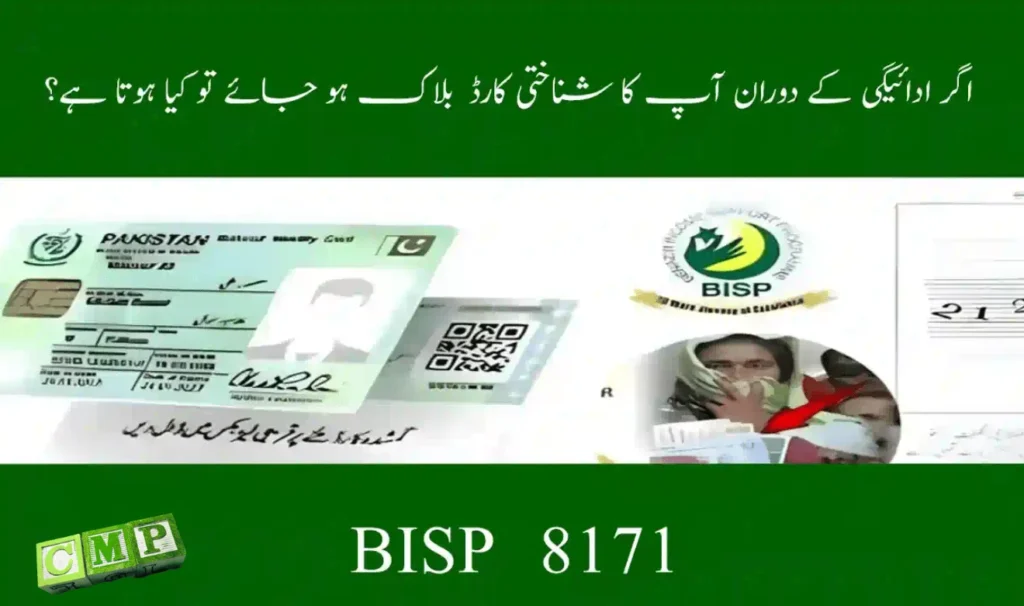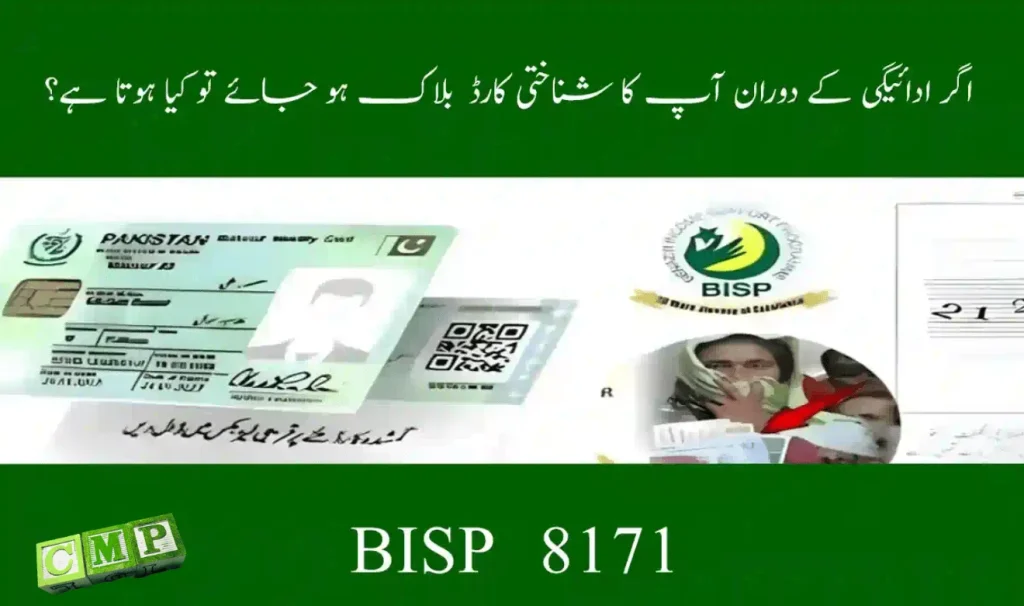In Pakistan, the Computerized National Identity Card (CNIC) is more than just an identity document. It serves as the gateway to essential services such as banking, healthcare, education, property ownership, and government financial aid. Without a valid CNIC, everyday activities like opening a bank account or receiving welfare grants become nearly impossible.
For millions of low-income families supported by the Benazir Income Support Programme (BISP) and other welfare initiatives, the CNIC is a lifeline. Payments are processed only when the recipient’s identity is verified through NADRA’s biometric database.
But what happens when your CNIC is blocked or expired? Payments are immediately halted until the issue is resolved. For poor households living on daily wages, this can feel catastrophic. The good news is that CNIC blocking is a temporary problem that can be fixed with the right steps.
This complete guide explains why CNICs get blocked, how it affects BISP payments, the exact process to fix it, and how to prevent such issues in the future.
Why CNIC Blocking Happens During Payments
Since payment systems are directly linked with NADRA’s national identity database, any issue in your CNIC record will automatically suspend payments. Below are the most common reasons:
1. Expired CNIC
The most frequent reason. Once your CNIC expires, it cannot be used for biometric verification. BISP and other financial aid systems immediately stop payments until the CNIC is renewed.
2. Blocked by NADRA
NADRA may block CNICs due to incomplete or suspicious records, including:
- Duplicate entries in the database
- Missing family details in the Family Registration Certificate (FRC)
- Fraudulent or suspicious activity linked to the CNIC
3. Biometric Mismatch
Fingerprint mismatches due to aging, health issues, or technical errors can cause a CNIC to be flagged during verification.
4. Data Mismatch in BISP Records
Even if you renew your CNIC at NADRA, your BISP records may still hold outdated information. If details do not match, the system blocks payments.
What It Means for Your Payments
When your CNIC is blocked:
- Payments are frozen until the issue is fixed.
- You cannot withdraw money from ATMs or agents.
- You cannot receive government grants into your account.
This creates panic among families who fear permanent removal from the program. In most cases, it is temporary. Once the CNIC is renewed and the records updated, blocked payments are restored and released with the next cycle.
⚠️ However, ignoring the issue for too long may result in loss of eligibility.
How to Fix a Blocked CNIC During Payment Processing
The solution requires two main steps: renew your CNIC at NADRA and update your records at BISP.
Step 1: Renew CNIC at NADRA
- Visit the nearest NADRA Registration Center.
- Carry your expired CNIC.
- Choose the renewal type:
- Normal (2–3 weeks, low fee)
- Urgent (7–10 days, higher fee)
- Executive (2–5 days, highest fee)
- Provide fingerprints, photos, and required documents.
- Collect the receipt or slip, which serves as temporary proof until the new CNIC is ready.
Step 2: Update Records at the BISP Tehsil Office
- Visit your nearest BISP Tehsil Office with your new CNIC or NADRA slip.
- Request an update of your beneficiary profile.
- Provide supporting documents such as:
- Family Registration Certificate (FRC)
- Proof of address (utility bill)
- Registered mobile number
- File a complaint for blocked payments.
- Collect a tracking number to monitor your case status.
How Long Does It Take?
After updating records, it usually takes 3–7 working days for payments to be restored. You will receive an official SMS from 8171 once your grant is active again. Pending payments are released along with the next scheduled installment.
Example Scenario
Ahmed, a BISP beneficiary, visits an ATM to withdraw his stipend, but the transaction fails. He discovers that his CNIC expired two weeks earlier. After renewing his CNIC at NADRA and updating his record at the BISP office, his payments are reactivated within five days. Ahmed not only receives his delayed installment but also collects the next cycle’s payment.
This shows that blocked CNICs are a temporary hurdle, not a permanent cut-off.
Frequently Asked Questions
Why is my CNIC blocked?
It may be expired, blocked by NADRA, or mismatched during biometric verification.
Do I have to pay to unblock it?
Only NADRA’s CNIC renewal fee is required. Updating your record at BISP is free.
How long until payments resume?
Normally, 3–7 working days after updating CNIC and filing a complaint.
What happens if I delay renewal?
Your payments remain blocked. Prolonged delays may lead to permanent removal from the program.
Who can I contact for help?
Call the BISP Helpline: 0800-26477 or send your CNIC to 8171 for updates.
Tips to Avoid CNIC and Payment Issues
- Renew your CNIC at least one month before expiry.
- Keep your mobile number updated with NADRA and BISP.
- Regularly check your status via 8171 SMS or portal.
- Save complaint slips and tracking numbers.
- Never pay agents or middlemen.
- Update family records after marriage, death, or relocation.
Preventing Future Problems
Prevention is better than cure. Keeping your CNIC valid and updating records on time prevents delays. Setting reminders for expiry dates and checking your BISP payment status every few months can protect you from blocked payments.
Final Thoughts
If your CNIC is blocked during payment processing, it does not mean permanent disqualification. It simply pauses your payments until verification is restored. By renewing your CNIC at NADRA, updating BISP records, and filing a complaint, you can resume payments quickly and recover pending dues.
Your CNIC is not just an ID card — it is your gateway to financial security, welfare aid, and a better future. Stay proactive, keep records updated, and never risk delays that could affect your family’s survival.

